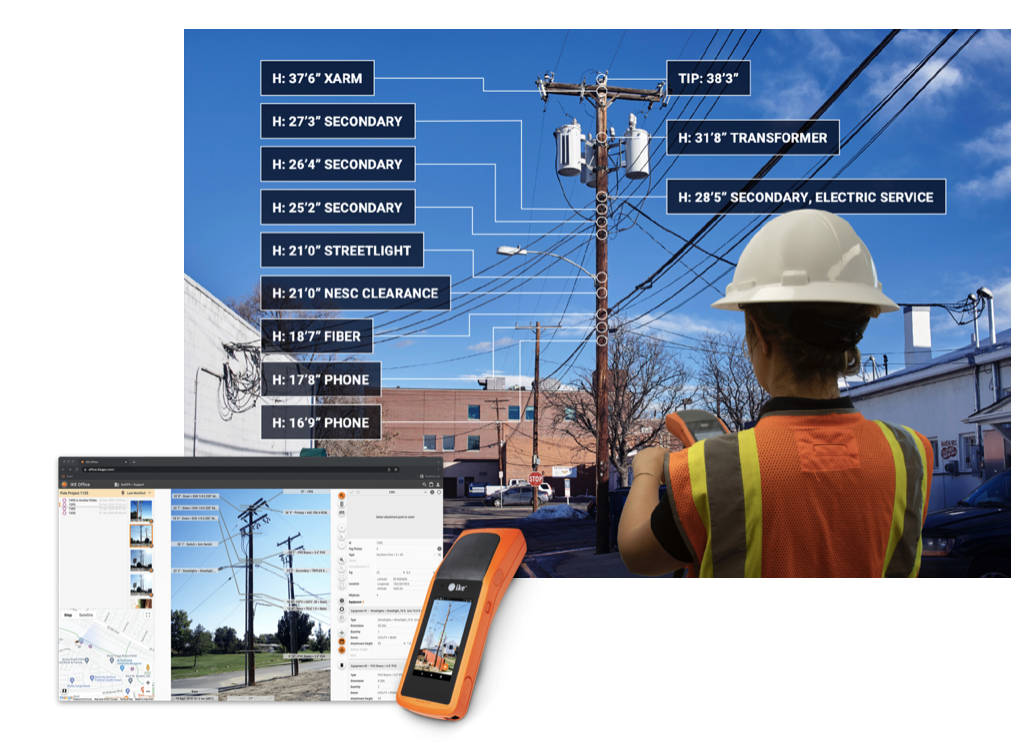The PoleOS™ Company
Planet Network’s CEO Robert Boyle saw an opportunity when The American Recovery and Reinvestment Act (ARRA) was signed into law on February 17, 2009.
A signature piece of Obama-era legislation, the act aimed to stimulate a lagging economy still in the throes of the Great Recession and included measures to modernize the nation’s energy and communication infrastructure.
Prior to that legislation, Mr. Boyle said in a 2021 panel discussion before the New Jersey League of Municipalities, the regulations on pole access were complex, making it very difficult for internet service providers such as Planet Networks to take advantage of existing infrastructure to expand broadband internet’s reach to new customers.

The ARRA essentially eliminated that complexity, making it easier for Planet Networks to attain access to the conduit and telephone poles to build a network and offer it to customers.
Fast forward to the close of the decade, a time often referred to as the gold rush of broadband when competing ISPs found themselves in a rush to acquire joint-use permits from local utilities as quickly as possible in order to attach their equipment to poles and service vast swaths of customers eager for high-speed internet.
In the years leading up to 2019, it wasn’t uncommon for Mr. Boyle to be in the field, working with field crews, manually gathering pole data needed to attain joint-use permits.
But as competition for space on utility poles intensified, so too did the need for speed among internet service providers seeking approved joint-use permits so they could then go about the lucrative business of providing internet services to customers.
Mr. Boyle needed to find a faster, more efficient means to acquire and analyze pole data. He found both with ikeGPS.
The first thing ikeGPS did was introduce the IKE Device into Planet Networks’ workflow.
Combining GPS, a laser rangefinder, calibrated image capability, and a user-friendly app, the IKE Device empowered Planet Networks’ fielders to attain:
- GPS accuracy configurable to either 4’ or 4”.
- Heights of attachment accuracy of 1” or better.
- Span accuracy within 4”.
Additionally, the IKE Device helped Planet Networks essentially eliminate the need for two-person teams often required when using more traditional methods of pole data collection.

Armed with the IKE Device, Planet Networks’ fielders were not only able to improve the speed they collected pole data to an impressive 5-7 minutes per pole, but they were also able to improve their efficiency in data collection as well.
Using the IKE Device all but eliminated the human errors that had plagued Planet Networks’ data collection and would often lead to the need for fielders to return to the field and recollect pole data.
All the while, field team safety improved with the IKE Device since fielders no longer had to traverse geography while lugging heavy equipment such as a Hasting Stick and did not have to return to the field for recollections since their data was accurate and in no need of being reacquired due to error.
“We wouldn’t trade our IKE’s for anything else!”
-Robert Boyle CEO, Planet Networks
The accelerated and efficient workflow allowed Planet Networks to attain the approved joint use permits needed to expand their service into new territories and exceed their ambitious growth goals, including a 36% increase in homes serviced in 2020 and 2021.
Currently, Planet Networks acquires data for an estimated 4,000 poles (roughly 167 miles) each month using the IKE Device.

The ISP that began in 1994 in the garage of an old firehouse with just three modems is poised for a bright future in 2023 and beyond. That’s because recent federal legislation will likely create significant opportunities in the communications industry as it did in 2009 with the ARRA.
Passed and signed into law in 2021, the American Rescue Plant Act (ARPA) establishes that allocated funds distributed to state, county, and non-entitlement units (municipalities) of local government may be used to make “necessary investments” in broadband infrastructure.
That’s great news for rural communities which don’t yet have broadband and may not yet have the infrastructure to support broadband expansion. The federal money can be used to build such infrastructure, making broadband expansion possible and financially feasible for service providers who might not have the initiative to build the structure themselves.
For providers looking to expand their services to the newly accessible rural customers that legislation funding makes possible, speed to market will be more critical than ever.
Simply put, whichever provider can acquire their joint use permits the fastest can commence attaching their equipment to poles and start signing up (and billing) customers.
Reducing time spent in the field collecting data and in the back office analyzing it is paramount.
With the IKE Device in its tool kit, Planet Networks reduced data acquisition time in the field while increasing safety. Now the company is poised to continue its rush to the future in the race for broadband supremacy.
And the future looks golden.
Brian Bauer is a Senior Account Manager at ikeGPS.
Joint-Use Collaboration. The IKE Way.
Learn MoreThe latest from the IKE Wire
Celebrating 2025 Achievements in Field Data Collection: Luck Grove Leader in Utility Pole Collection
Utility engineering experts top 220,000 collections in 2025 As we close out 2025, the...
Read MorePole Attachment Tips for Successful BEAD Deployments
Four tips to reduce friction in attachment processes The Broadband Equity Access and ...
Read MoreUnderstanding the NESC rules for streetlights in the Communication Worker Safety Zone
In an earlier blog post, we explored the Communication Worker Safety Zone – its...
Read MoreSubscribe to the IKE Wire
Get the latest insights on data acquisition and structural analysis from the ikeGPS experts.





